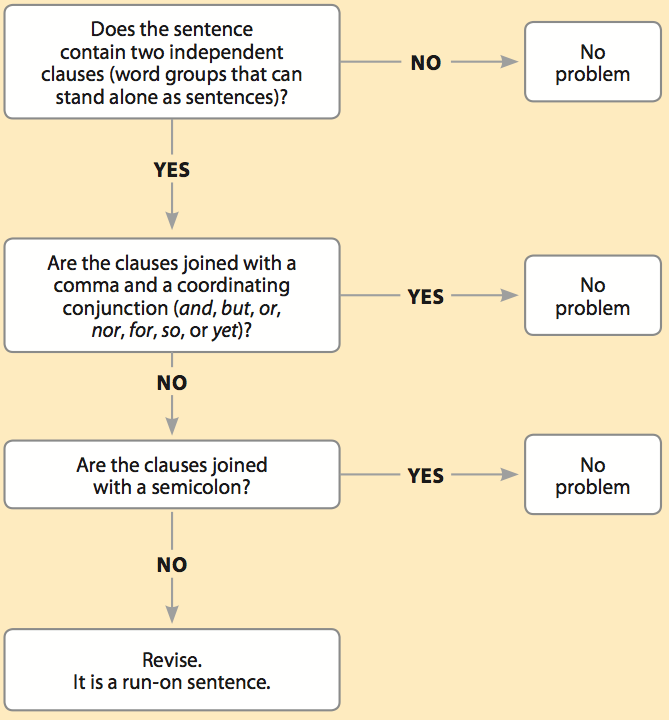G6: Run-on sentences
Run-on sentences are independent clauses that have not been joined correctly. An independent clause is a word group that can stand alone as a sentence. (See B4-a.) When two independent clauses appear in one sentence, they must be joined in one of these ways:
- with a comma and a coordinating conjunction (and, but, or, nor, for, so, yet)
- with a semicolon (or occasionally with a colon or a dash)
Recognizing run-on sentences
There are two types of run-on sentences. When a writer puts no mark of punctuation and no coordinating conjunction between independent clauses, the result is called a fused sentence.

A far more common type of run-on sentence is the comma splice—two or more independent clauses joined with a comma but without a coordinating conjunction. In some comma splices, the comma appears alone.
| comma splice | Air pollution poses risks to all humans, it can be deadly for asthma sufferers. |
In other comma splices, the comma is accompanied by a joining word that is not a coordinating conjunction. There are only seven coordinating conjunctions in English: and, but, or, nor, for, so, and yet.
| comma splice | Air pollution poses risks to all humans, however, it can be deadly for asthma sufferers. |
However is a transitional expression, not a coordinating conjunction, and cannot be used with only a comma to join two independent clauses (see G6-b).
Revising run-on sentences
To revise a run-on sentence, you have four choices.
Use a comma and a coordinating conjunction (and, but, or, nor, for, so, yet).

Use a semicolon (or, if appropriate, a colon or a dash). A semicolon may be used alone; it can also be accompanied by a transitional expression.


Make the clauses into separate sentences.

Restructure the sentence; try subordinating a clause.

One of these revision techniques usually works better than the others for a particular sentence. The fourth technique, the one requiring the most extensive revision, is often the most effective.
